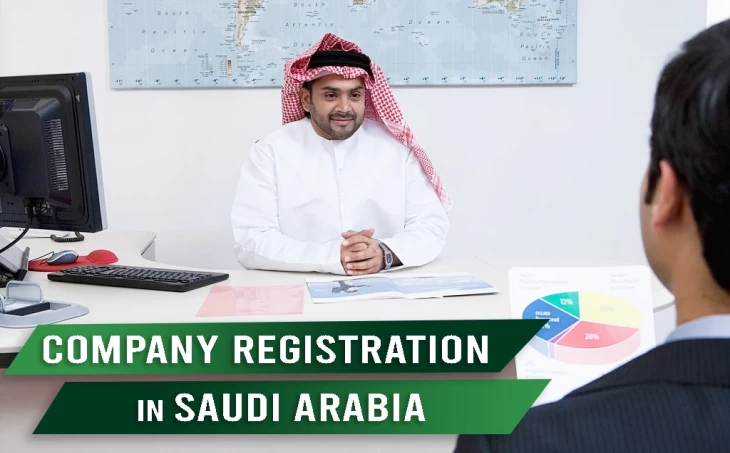Starting a business in Saudi Arabia is an attractive opportunity for entrepreneurs looking to tap into a growing economy with vast potential. Whether you’re looking to enter the local market, expand globally, or leverage the country’s strategic location in the Middle East, Saudi Arabia offers a wealth of opportunities. In this article, we’ll guide you through the essential steps on how to open a company in Saudi Arabia, focusing on high-CPM AdSense keywords to help you optimize your business and generate income.
Why Open a Company in Saudi Arabia?
Saudi Arabia, the largest economy in the Middle East, offers numerous incentives for foreign investors. With its Vision 2030 reform plan, the Kingdom is transforming its economy from oil dependency to a diversified, private-sector-driven market. The country boasts strong infrastructure, a favorable business climate, and a young, tech-savvy population. The government is keen on supporting new businesses and has streamlined the process of company formation.
Moreover, the Saudi market offers high demand for various sectors, including e-commerce, technology, healthcare, and finance, making it a lucrative location for digital entrepreneurs and traditional businesses alike.
Key Requirements for Opening a Company in Saudi Arabia
- Choose Your Business Structure Saudi Arabia offers various business structures, depending on your goals and ownership preferences. The most common options include:
- Limited Liability Company (LLC): Ideal for small and medium-sized businesses, where the liability of owners is limited to their share capital.
- Joint Stock Company (JSC): Suitable for large businesses, requiring a higher level of capital and more shareholders.
- Branch Office: For foreign companies wishing to open a branch in Saudi Arabia, typically for commercial activities.
- Foreign Investment Company: A legal entity that allows 100% foreign ownership under the Saudi General Investment Authority (SAGIA).
- Register Your Business Once you’ve decided on the business structure, the next step is to register with the relevant authorities. This typically involves:
- Registering with the Saudi Arabian General Investment Authority (SAGIA) for foreign investments.
- Registering your company name with the Saudi Ministry of Commerce and Investment (MCI).
- Obtaining a commercial registration (CR) from the MCI.
- Registering for tax purposes with the Saudi tax authority.
- Obtain Necessary Licenses and Permits Depending on your business activities, you may need to apply for specific licenses and permits. For example, if you’re starting an e-commerce platform, you’ll need a permit from the Saudi Arabian E-Commerce Council. Similarly, businesses in sectors like healthcare, manufacturing, or finance may have industry-specific regulations.
- Open a Bank Account Saudi Arabia’s financial sector is well-developed, and you’ll need a local bank account to manage your business finances. To open a business account, you’ll need to present your commercial registration, company formation documents, and proof of business activities.
- Hire Employees and Manage Visas As a foreign business owner, you’ll need to consider how to hire local talent. Saudi Arabia’s workforce is young, educated, and technologically savvy. You can hire employees under the sponsorship system (kafala system) or hire foreign workers via the Work Visa program, depending on the nature of your business.
How to Optimize Your Business with High-CPM AdSense Keywords
Once your company is established, it’s essential to leverage online marketing and monetization opportunities. For businesses looking to maximize their revenue through Google AdSense, choosing the right keywords is crucial. High-CPM (Cost Per Thousand Impressions) keywords can help boost your revenue and drive traffic to your website.
Here are some tips to target high-CPM AdSense keywords:
- Focus on Profitable Niches Targeting high-CPM niches such as financial services, insurance, healthcare, and technology can help increase your ad revenue. For example, keywords like “Saudi Arabia business insurance,” “online loans in Saudi Arabia,” or “investment opportunities in Saudi Arabia” typically attract advertisers willing to pay higher rates for clicks.
- Conduct Keyword Research Use tools like Google Keyword Planner, Ahrefs, or SEMrush to conduct keyword research. Look for keywords with a high search volume and low competition in the Saudi market. Keywords like “buy property in Saudi Arabia,” “luxury cars Saudi Arabia,” and “Saudi online shopping trends” often generate higher ad revenue.
- Create Content That Matches High-CPM Keywords Once you’ve identified the high-CPM keywords, create content tailored to your audience’s needs. For example, write blog posts, reviews, or guides related to business setup in Saudi Arabia, investment tips for foreign entrepreneurs, or how to start an e-commerce business in Saudi Arabia. By addressing specific queries, you increase the chances of showing relevant ads that pay well.
- Implement SEO Best Practices Ensure your website is optimized for search engines to increase organic traffic. Incorporate on-page SEO strategies like proper keyword usage, meta tags optimization, internal linking, and creating high-quality, relevant content. Search engine visibility will drive more visitors to your website, and with high-CPM keywords, you can maximize AdSense revenue.
- Use AdSense Best Practices Google AdSense has guidelines for placing ads on your website for optimal earnings. Make sure to:
- Use responsive ad units that adapt to different screen sizes, especially for mobile devices, as Saudi Arabia has a high mobile internet penetration.
- Experiment with ad placement (above the fold, in-content, and within the sidebar) to find the best-performing spots.
- Use Google’s Auto Ads feature to allow AdSense to automatically place ads where they are most likely to perform well.



